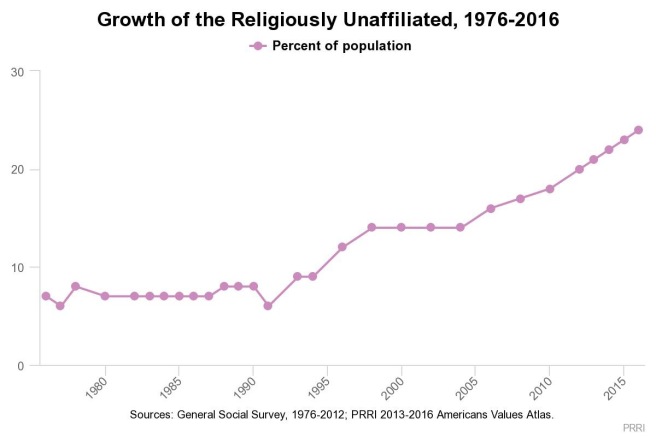This week in The Benito Juárez Experience we digest the news from earlier this month about the United States withdrawing from the Paris Climate Agreements. Luciano does an excellent job explaining the importance and the limitations of the Paris agreements. I pitch in with some comments about the complexity of American public opinion regarding climate change.
I draw from two main data sources: the Religion, Values, and Climate Change Survey published by Public Religion Research Institute and the American Academy of Religion on November 2014 (I worked on the design and analysis of this poll back when I was at PRRI); and the Pew Research Center’s Global Attitudes Survey from the Spring 2015. The PRRI poll says a lot about what Americans think about climate change while the Pew poll puts some of those opinions in a global context.
The PRRI survey developed three categories of attitudes about climate change: believers (who think it is happening), sympathizes (who agree it is a thing but not very concerned), and skeptics (who doubt CC is an actual thing). Luckily, the largest group is the “believers.” Unfortunately, less than half the USA population fits in this category.
 We know that most Americans do not fully believe climate change is an actual event worth acting upon. But it gets worse. Even those who are classified as “believers” are not particularly concerned. This second chart, from the same poll, shows that when asked about their level of concern, less than half of believers say they are very concerned. Only 3-in-10 Americans are very concerned about climate change. Among “sympathizers” just 4-in-10 have some level of concern (a combination of “very” and “somewhat” concerned).
We know that most Americans do not fully believe climate change is an actual event worth acting upon. But it gets worse. Even those who are classified as “believers” are not particularly concerned. This second chart, from the same poll, shows that when asked about their level of concern, less than half of believers say they are very concerned. Only 3-in-10 Americans are very concerned about climate change. Among “sympathizers” just 4-in-10 have some level of concern (a combination of “very” and “somewhat” concerned).

The reason for why even those Americans who think that climate chants an issue are not very concerned about the issue is due to a very weird strand of “American Exceptionalism.” In this case, most Americans think that climate change is a problem that the rest of the world has to deal with because it is not an American problem. The figure below shows how this plays out.

A majority of Americans think that “people in poorer developng countries” will be impacted “a great deal” by climate change. Only one-third of Americans think that climate change will climate change will impact people in the USA a great deal. It is a very selfish and foolish position. On one level, it is quite arrogant to believe that your country will be spared of the effects of something that will affect the whole damn planet. On another level it is also very foolish…in what ways is our country insulated from something that’s going on globally?
The Pew poll provides some context of how out of line Americans’ opinions are compared to the rest of the planet. As Luciano points out in the podcast, the USA is one of the largest polluters in the planet. So, we bear a lot of the responsibility for this problem. And that’s what the rest of the planet thinks. A majority of people in the rest of the world think that rich countries should bear more of the cost of addressing the climate change crisis compared to developing countries. Only in the USA more people say that developing countries should bear more of the cost. This suggests that Americans are just afraid that they’ll have to give up their gas guzzlers and all-night Christmas lights.

The USA is also a bit of an outlier in how imminent the harm caused by climate change will start affecting people. Only the Middle East (an oil-producing region, I may add) is less likely to say the danger is “now” than “in the next few years”. Moreover the USA and the Middle East also have the largest proportions of denialism since just about 7-in-10 gave an answer that indicate they think climate change is a threat.

I hope this post puts some of my comments in a better context. These charts and the reports they come from (as well as other public opinion data) also stress the need for more action, including political organization around this issue. While the Peoples’ Climate March was a great idea, these opinion patterns precede the Trump presidency. And I fear they will get worse.









